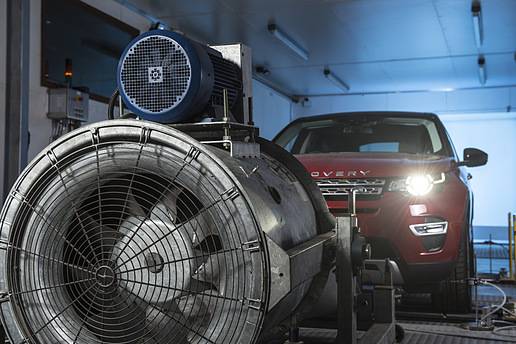 Chris Brace 教授说:“我们会加大在电动推进系统上的研发力度,但内燃机(ICE)依旧会是我们重点研究的项目。”(图片来源:巴斯大学)
Chris Brace 教授说:“我们会加大在电动推进系统上的研发力度,但内燃机(ICE)依旧会是我们重点研究的项目。”(图片来源:巴斯大学) 巴斯大学的动力与汽车研究中心非常擅长涡轮机械方面的研究。(图片来源:巴斯大学)
巴斯大学的动力与汽车研究中心非常擅长涡轮机械方面的研究。(图片来源:巴斯大学) Jamie Turner教授认为,随着用氢气人工合成二氧化碳的技术逐渐成熟,这种全新的碳中性液态燃料(CNLF)——“电燃料”的应用已成为可能。(图片来源:巴斯大学)
Jamie Turner教授认为,随着用氢气人工合成二氧化碳的技术逐渐成熟,这种全新的碳中性液态燃料(CNLF)——“电燃料”的应用已成为可能。(图片来源:巴斯大学)
超低排放的环保汽车(ULEV)无疑是未来研发的主题,而英国正在为此打造一座全球性的顶尖研发中心。该中心取名汽车高级推进系统研究院(IAAPS),由政府资助、巴斯大学负责建立,计划于2020年初正式落成。借助高校工程系的专业技术,该研究院的研发重点将会放在先进推进系统的转型创新方面。
福特(Ford)、捷豹路虎(JLR)、麦克拉伦(McLaren Automotive)、Hofer Powertrain、堀场集团(Horiba Group)等多家专业公司也都参与了这个项目。研究院几乎囊括了汽车行业各领域的翘楚,可谓群贤毕至。而IAAPS也将为有志之士提供汽车工程方面的专业技能培训,开设学徒制培训项目、硕士课程及博士课程,并设有荣誉学位。
Chris Brace目前身兼动力总成与汽车研究中心(PVRC)副总监和巴斯大学汽车动力学教授的职务,他和他的同事、发动机与能源系统教授Jamie Turner将在这一新的项目中扮演重要角色。近期两位专家一同接受了SAE《国际汽车工程》杂志欧洲区编辑Stuart Birch的专访。
SAE:如今很多OEM、一级供应商以及其他一些专业咨询公司都在研究并开发先进推进系统,IAAPS主要的探索和研究方向会是什么?这一方向的确立又是出于何种考量?
IAAPS的研究的研究将会关注实际驾驶工况、驾驶员行为以及先进推进系统这三者在系统层面的互动。要想打造出节能、高效并且经济的汽车以供未来之需,就必须更好地了解这些复杂的系统层面行为。
SAE:在研究先进动力系统方面,巴斯大学有何独到优势?
通过PVRC四十多年的不懈努力,我们在某些专业相关领域已经积累起了多年的声望,包括提升柴油与汽油机的能效与减排效果,以及电动推进系统和混合动力系统方面的进展。涡轮机械将继续作为核心的专业技术进行研发。目前,我们的一项新任务就是要整合内燃机(ICE)并向混合动力过渡,从而更好地管理内燃机,同时使车辆能效更高,更加节能环保。
SAE:出于政治方面的原因,很多国家已经承诺,或很有可能将要做出承诺,要求最晚到2040或2050年左右,所有新生产的汽车都必须部分或完全实现电动化。这是否意味着IAAPS或巴斯大学方面会放弃对内燃发动机方面的研究?
大多数的政策都瞄准了汽车电动化,意味着在可预见的未来,混合动力与插电式混合动力都仍是汽车行业的研究重点。无论是发动机还是燃料,都需要大幅升级,以达到二氧化碳排放和空气质量指标的要求,同时又不必在功能性和成本方面有所牺牲。因此,尽管我们会加大在电动动力系统上的研发力度,内燃机依旧会是我们重点研究的项目。
对于纯电动车而言,要想提升性能并降低生产成本,系统层面的相互协作以及实际工况中的性能表现,仍是研究的重中之重。而我们在IAAPS的研究将会对此起到十分关键的作用。
SAE:目前,世界范围内的大量道路用车都在以较快的速度从内燃机向纯电动方向转变。纵观世界主要市场,相关行业要如何提供足够多的能源来应对这一变化趋势?
无论是从全球角度,还是从各类能源使用的角度看,这都是一个巨大的挑战。航空业与重型车辆都是能源密集型燃料的长期“用户”。节能技术若能在这一领域取得成功,将对全世界的道路交通运输业产生深远的影响。其实,这些需求整合起来,意味着需要大幅提升可再生能源发电量,而最近哈佛大学的一项研究成果可能会对这一问题产生巨大影响,其研究内容为直接通过太阳能制造液态烃类燃料,目前尚处于实验室研究阶段。
SAE:在您看来,如果替代能源采集技术得到进一步发掘,纯电动汽车是否有可能被其他替代能源车辆所取代?若是如此,您认为这种替代能源会是什么,将会在何时崛起?
交通运输能源需求巨大,人们也要求车辆实现轻量化并且使用起来更加经济,这两个方面都十分重要。因此如果能够有一个收集并加工能源的设施,可以制造一种能源密集型液态燃料,无疑将会是非常有吸引力的解决方案。“电燃料(Electrofuel)”就是备选方案之一。目前他们以效率为代价来提升能源储存与配电网络效用,但不少研究已经表明,电燃料的商品化有望在2040年前完成。
橡树岭国家实验室的最新研究表明,如果可以在经济上产生规模效应,从水和二氧化碳中人工合成乙醇燃料并非不可能。若是如此,局面将得到彻底改观。同时,瑞典的Climeworks也在其工厂开展实验,采用工业手段从大气中提取二氧化碳,而其他正在研究这一技术的公司与研究机构还有很多。因此,随着用氢气人工合成二氧化碳的技术逐渐成熟,这种碳中性液态燃料(CNLF)——“电燃料”的生产已成为可能,而我们接下来要做的则是使其更高效、更经济。
CNLF能够为充电基础设施的发展铺平道路,也可以有效降低车辆的成本。而有了这一燃料,相信汽车的效用也将能发挥到最大,令化石燃料望尘莫及。
另外值得一提的是,汽车仅仅是这种燃料应用的部分领域,航空和海运也都需要这种碳中性能源密集型燃料,而在这两个领域,电气化无法取而代之。因此,这两个行业很可能会大力推动电燃料的研发,促使其成本降低。这样一来,汽车行业的需求则又会增加。而有趣的是,这一新燃料很可能会成为电气化以及氢能源这两种汽车新能源的“掘墓人”。由于电能和氢能自身条件的限制,无法满足所有各类交通运输工具的使用需求。而反观CNLF,从技术角度而言,这种燃料可谓是汽油和柴油的“完美替身”,显然更能满足各种不同需求。
而从长远看,碳中性燃料可能会在能源储备充足的地区(如沙漠地区)生产,然后再以我们运输石油燃料的经济方式进行运送。因此使用这一燃料的PHEV将会从以内燃机为动力源,转向以固态氧化物燃料电池为动力源,因为动力产生的过程中没有燃烧环节,空气质量就得到了提高,碳和水之间的循环反应也不再发生,因而从对抗全球变暖的角度而言,这一技术可谓意义重大。
A global center of excellence to develop future generations of ultra-low emissions vehicles (ULEV) is being established in the U.K. Developed by the University of Bath with U.K. government funding, the Institute for Advanced Automotive Propulsion Systems (IAAPS) is scheduled to open in early 2020. Its R&D focus will be on transformational innovation for advanced propulsion systems, exploiting the university's engineering expertise.
Ford, Jaguar Land Rover (JLR), McLaren Automotive, Hofer Powertrain, Horiba Group and other specialist businesses are also involved in the project, which will see a dedicated facility constructed. The IAAPS will also provide training and skills development in automotive engineering, supporting new apprenticeships, honors degrees, masters and doctoral courses.
As Deputy Director of the Powertrain & Vehicle Research Centre (PVRC) and Professor of Automotive Propulsion at the University of Bath, Chris Brace and his colleague Jamie Turner, Professor of Engines and Energy Systems, will have key roles in the new project. They discussed its aims with Automotive Engineering European Editor, Stuart Birch.
Q: Many OEMs, Tier 1 suppliers and specialist consultancies are researching and developing advanced propulsion systems. What are the main avenues that the IAAPS will explore and support, and why?
The IAAPS’s research agenda focuses on the system-level interactions between real world conditions, driver behavior and complex modern propulsion systems. Better understanding of these challenging system-level behaviors is key to achieving the clean, efficient and affordable vehicles that we need for the future.
Q: What are the particular strengths of the University of Bath’s research into advanced propulsion?
Through our PVRC, we have a longstanding reputation [over 40 years] for delivery by improving the efficiency and emissions of diesel and petrol engines, and electric and hybrid propulsion systems. Turbomachinery continues to be a core aspect of that expertise. An emerging aspect of our work is the integration of the ICE into hybrid powertrains to better manage the ICE and allow higher real world efficiencies as well as clean operation.
Q: For political reasons, many countries have committed or are likely to commit, to electrified or pure electric new vehicle production by circa 2040/50. Does that mean the IAAPS/ Bath will abandon R&D into IC engines?
Most policy statements point to the electrification of vehicles, meaning that the hybrid and plug-in hybrid will still be an essential part of the fleet for the foreseeable future. The engine and fuel will need to evolve significantly in order to achieve the CO2 and air quality targets we need to meet without sacrificing utility or affordability. The ICE will therefore remain a core aspect of our research even as we increase our research into electric propulsion systems.
For battery electric vehicles, the system level interactions and real world performance will remain critical areas of research in order to improve utility and affordability. The research we will be conducting in IAAPS will play an important role in this work.
Q: Looking at the major world markets for road transport, how can they/are likely to provide, sufficient energy to satisfy the needs of a massive and relatively rapid move away from IC engines to pure EV propulsion?
At the global level and across all energy uses, this is a huge challenge. The long-term need for aviation and heavy duty is for a sustainable source of energy-dense fuel. Success in this arena will also have a profound impact on road transport around the world. All of these needs come together in a requirement for a huge growth in the availability of renewable electricity. One interesting approach that could impact on this problem is the recent success by Harvard in the manufacture of liquid hydrocarbons directly from solar energy at laboratory scale.
Q: In your view, will batteries be replaced by alternative power sources for vehicles via energy harvesting; if so, what do you envisage as practical alternatives to batteries and can you project a possible timeline?
The intense energy needs for transport, combined with the need to make individual vehicles affordable and lightweight, are so significant that an off board collection and processing facility that results in an energy dense liquid fuel would appear to be an attractive option. 'Electrofuels' are one way to achieve this. They increase the utility of the energy storage and distribution network at the expense of efficiency, but there is a lot of research that could make these fuels a commercial reality before 2040.
New research by Oak Ridge National Lab that can synthesize ethanol from water and CO2 could be a game-changer, provided it can be scaled up economically. Also, Climeworks in Switzerland have plants currently operating commercially extracting CO2 from the atmosphere, and are only one company/research institution among many researching this. Hence, through synthesis of CO2 with hydrogen a carbon-neutral liquid fuel (CNLF) 'electrofuel' is effectively a reality now; we need to work on the energetic efficiency and the economics of it.
CNLFs offer an evolutionary path for infrastructure, as well, and they keep the vehicles affordable. There will also be the opportunity with such fuels to optimize them in a way refined crude oil cannot be.
It is also worth saying that automotive is only one part of the problem. Such carbon-neutral energy-dense fuels will be needed for aircraft and shipping, for which electrification is not an option. These sectors will likely drive the development of this approach, forcing down the prices of such fuels, and automotive will then add to the demand. Somewhat ironically, this has the potential to be truly disruptive for both electrification and the hydrogen economy, because they cannot service all of the demand across all transport modes due to their unwieldiness aboard the vehicle; obviously, CNLFs can, since they are drop-in alternatives to petroleum fuels.
As a long-term potential outcome, I see carbon-neutral fuels made in places with abundant energy like the deserts and transported economically, as we do now with petroleum fuels in vehicles, which will transition from ICE-engined PHEVs to PHEVs incorporating solid oxide fuel cells, but still operating on those fuels. This will remove combustion from the equation, improving air quality, and close both the carbon and water cycles—which may actually be very significant from a global-warming-potential viewpoint.
Author: Stuart Birch
Source: SAE Automotive Engineering Magazine
等级
打分
- 2分
- 4分
- 6分
- 8分
- 10分
平均分
- 作者:Stuart Birch
- 行业:汽车
- 主题:环境燃料和能源噪声、振动与声振粗糙度零部件动力与推进力质量、可靠性与耐久性测试与检验
